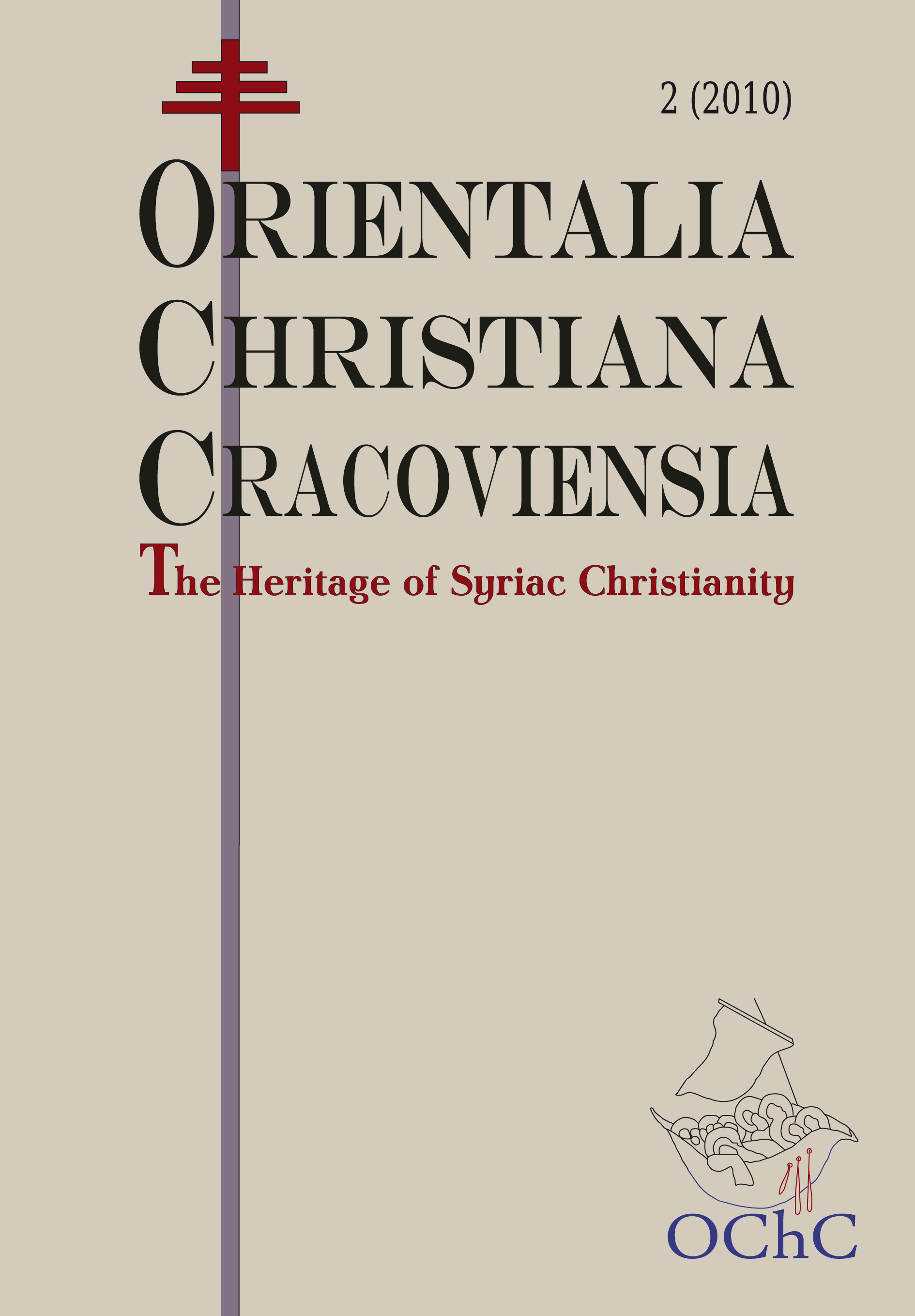The view of the lower Tiyari village after Badr Khan Bey’s campaign in Austen Henry Layard’s account
DOI:
https://doi.org/10.15633/ochc.1014Słowa kluczowe:
Austen Henry Layard, Tiyari, Badr Khan BeyAbstrakt
The article brings some account on events form the 19th century based on the text of Austen Henry Layard Nineveh and its Remains (New York 1854). The book is the result of the studies of Austin Henry Layard who spent some time between November 1845 and April 1847 conducting excavations around the ancient city of Nemrod. His notes concern both the difficulties of the search and excavation and also his numerous trips around the region, including the Tiyari Mountains and Yezidi-inhabited Sinjar. There are many descriptions of the everyday life of the Arab tribes living around Mosul and also the everyday life of the main city of the province.
Bibliografia
Atiya A.S., Historia Kościołów Wschodnich, Warszawa 1978
Bader G. P., The Nestorian and their rituals: with the narrative of a Mission to Mesopotamia and Coordistan in 1842–44, and of a late visit to those countries in 1850: also, researches into the present condition of the Syrian Jacobites, Papal Syrians, and Chaldeans and an inquiry into the religious tenets of the Yezeedees, vol. 1, London 1852.
Fortescue A. , The Lesser Eastern Churches, London 1913.
Joseph J., The Modern Assyrians of the Middle East. Encounters with Western Christian missions archeologists and colonial powers, Leiden 2000.
Jwaideh W., The Kurdish National Movement. Its origin and development, New York 2006.
Layard H.A., Nineveh and its Remains, New York 1854.
McDowall D., A modern history of the Kurds, London-New York 2000.
Stoddard D.T.,Memoire of Rev. David Trappan Stoddard, New York 1858.
Wilmshurst D., The ecclesiastical organization of the Church of the East, 1318–1913, Livonia 2000.
Pobrania
Opublikowane
Numer
Dział
Licencja
Prawa autorskie (c) 2015 Adrian Jasik

Praca jest udostępniana na licencji Creative Commons Attribution-NonCommercial-NoDerivatives 3.0 Unported License.
Twórca oświadcza, że przysługują mu prawa autorskie do utworu i że nie są ograniczone w zakresie objętym niniejszym oświadczeniem oraz że utwór jest dziełem oryginalnym i nie narusza praw autorskich innych osób.
Twórca zezwala Uniwersytetowi Papieskiemu Jana Pawła II w Krakowie na nieodpłatne, niewyłączne i nieograniczone w czasie korzystanie z utworu, to jest:
- utrwalanie i zwielokrotnianie: wytwarzanie egzemplarzy utworu techniką drukarską, reprograficzną, zapisu magnetycznego oraz techniką cyfrową;
- obrotu oryginałem albo egzemplarzami, na których utwór utrwalono (wprowadzanie do obrotu, użyczenie lub najem oryginału albo egzemplarzy, publiczne wystawienie, wyświetlenie, a także publiczne udostępnianie utworu w taki sposób, aby każdy mógł mieć do niego dostęp w miejscu i w czasie przez siebie wybranym);
- włączenie utworu w skład utworu zbiorowego;
- udzielanie przez Uniwersytet Papieski Jana Pawła II w Krakowie sublicencji Creative Commons Uznanie autorstwa-Użycie niekomercyjne-Bez utworów zależnych 3.0 Polska
Uniwersytet Papieski Jana Pawła II w Krakowie udostępnia utwór na Platformie Czasopism należącej do uczelni, na licencji Creative Commons Uznanie autorstwa-Użycie niekomercyjne-Bez utworów zależnych 3.0 Polska. Tym samym uprawnia wszystkich zainteresowanych do korzystania z utworu pod następującymi warunkami:
- zostanie podany autor i tytuł utworu,
- zostanie podane miejsce publikacji (tytuł czasopisma i adres internetowy do oryginalnie opublikowanego utworu),
- utwór będzie dystrybuowany w sposób niekomercyjny,
- nie będą tworzone utwory zależne.

